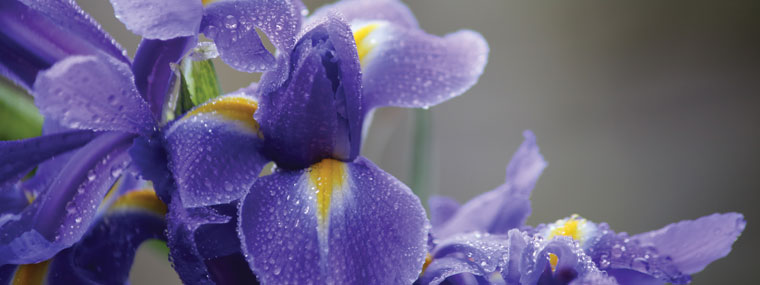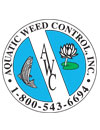
Ponds Are Like A Box of Chocolates
By Carole Inman / Published June 2017
Ponds are like a box of chocolates; you never know what you’re gonna get. They come in many shapes and sizes: square, round, rectangular to curves, and shallow to very deep.
From the time a waterway is made, it can fill with unwan-ted ingredients, like plants and unwanted nutrients. Most of the unwanted nutrients come from the runoff of the rain we get in Florida. Moving water flows into ponds as it drains across the land and concrete surfaces.
Buildup of road grime from streets, parking lots, and driveways move oil and grease into the water. Runoff from these surfaces, and even roofs, contain tar, plant material, and other toxins that pollute the water. Fertilizer and clippings from mowed grass get into the water and energize any new growth. This is why your aquatic management company recommends that you tell the landscapers not to fertilize within 10 feet of the bank and not to blow any fertilized grass clippings into the water. These unwanted nutrients can cause invasive plants to grow. Seedlings are also fed by these nutrients, causing them to germinate and grow. It can also cause organic buildup of sediment or muck, which can be difficult to remove. Too many large, undesirable plants can deplete the oxygen levels and cause fish to die and choke out the desired plants.
Detrimental Plants
Here are a few commonly recognized plants that might look good but can take a bite out of our waterway. When they become invasive, and they will, they choke out nearby beneficial plants because they block sunlight and absorb all the nutrients. Cattail, duck weed, and water hyacinth are three plants to combat.
Cattail
One of the most recognizable plants along a shoreline is the cattail. They are most commonly found growing naturally in marshes and wetlands. They are transplanted from their natural areas and added along shorelines to add a focal point, but in no time, they will become an eyesore because of their invasive nature.
– They grow in clusters/stands three to ten feet tall.
– They have an underground root system that spreads continuously and quickly.
– This stiff plant has flat bladelike green leaves.
– The flower, or cattail, has two parts: a brown cylinder base with a yellow spike on the top.
– Pollinated flowers develop into tan, fluffy seed heads that blow everywhere in the fall. These seeds are used by birds and waterfowl for nesting. Those that are not used may land in wet soil and take root.
Duck Weed
Duck weed has tiny leaf-like stems that grow together forming mats as thick as one inch. In ponds where there are several mats,the winds can push them to one area, forming one very large mat that can cover the entire pond.
Water Hyacinth
Water Hyacinth is thought to be one of the world’s worst aquatic plants and is listed on Florida’s Prohibited Plants list, which means this plant cannot be imported, transported, non-nursery cultivated, collected, or possessed.
– They form dense floating mats that interfere with navigation, recreation, irrigation, and more.
– New mats double in size in 6–18 days and can grow up to three feet above the waterline.
– An acre of mats can weigh up to 200 tons.
– Lavender flowers appear in October. The flowers contain fruit capsules which hold the seeds.
Beneficial Plants
To help prevent unwanted nutrients getting into your pond, here are a few of our favorite native plants that are commonly planted because they are appealing to the eye and perform well. These are planted along the shoreline to be the first to catch any unwanted nutrients before they get into the waterway. This action helps feed the plant, thus preventing weed growth.
Blue Flag Iris
One of the first to show off in spring is the blue flag Iris.
– This wetland perennial has strong stems that bear sword-like narrow leaves.
– One to two very fragrant, purple-blue flowers appear on each stem in early spring.
– Their root system helps the plant spread out and also holds the bank in place.
Canna
Canna we tell you about canna? This plant is valued for its impressive, bright-colored flowers and large tropical leaves. The gold canna is frequently seen in clusters along the edges of marshes and waterways.
– They are easy to grow in full sun but can tolerate semi-shady areas.
– Growing up to four feet tall, the plant bears leaves that are six inches wide by two feet long, with a waxy coating that helps to repel water and prevent disease.
– The flowers are about three inches tall and grow in clusters on each stem. To ensure a continuous bloom through the summer, remove the part of the stem that held the withered flower.
– Canna can do their job to keep out unwanted nutrients while looking beautiful at the same time.
Pickerel
Pickerel is another well-recognized plant in Florida. It is not only beautiful but functio-nal; catching those unwanted nutrients in their deep green, rich foliage and underground root system.
– Pickerel flourishes with full sun and soggy, wet soil along the shoreline.
– You can expect plants that are three to four feet tall, but only one to two feet will appear above the waterline.
– Attractive heart-shaped leaves, ten inches tall by five inches wide, provide cover for a wide range of wildlife.
– An underground root system allows the plant to spread and send up new stems.
– Clusters of lavender flowers grow June through November. The flower nectar attracts insects, bees, and butterflies. The flowers turn to seeds that are eaten by birds and water fowl.
There are hundreds of desirable and undesirable plants that can fill your pond. By following this article, you can know what you’re gonna get in your pond. Like any good box of chocolates, it’s what’s inside that counts.
Carole Inman
Marketing For Aquatic Weed Control Inc.
Carole Inman works in marketing for Aquatic Weed Control Inc. She works closely with all departments to make sure the company is well represented and the customer is always informed. Each month she writes an educational newsletter about what is currently happening in the world of aquatics. She is proud to represent a comp-any that is celebrating 25 years of loyal service to Florida’s communities, environmental consulting firms, hospitals, hotels, golf courses, developers, and county, city, and state agencies, and more. “Aquatic Weed Control is your CLEAR choice in aquatic and wetland management!” For more information, call (800) 543-6694 or visit www.Aquaticweedcontrol.net.



